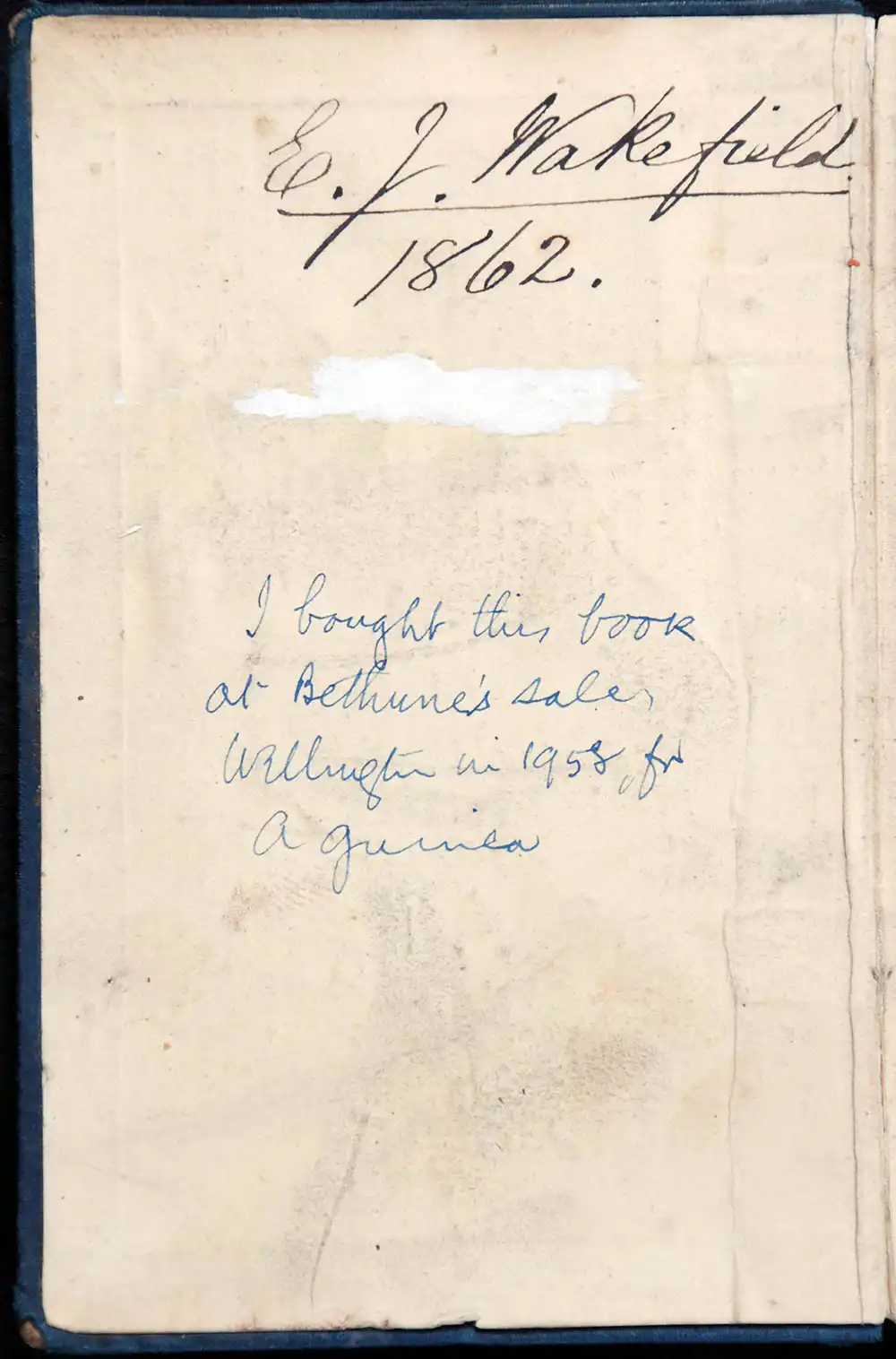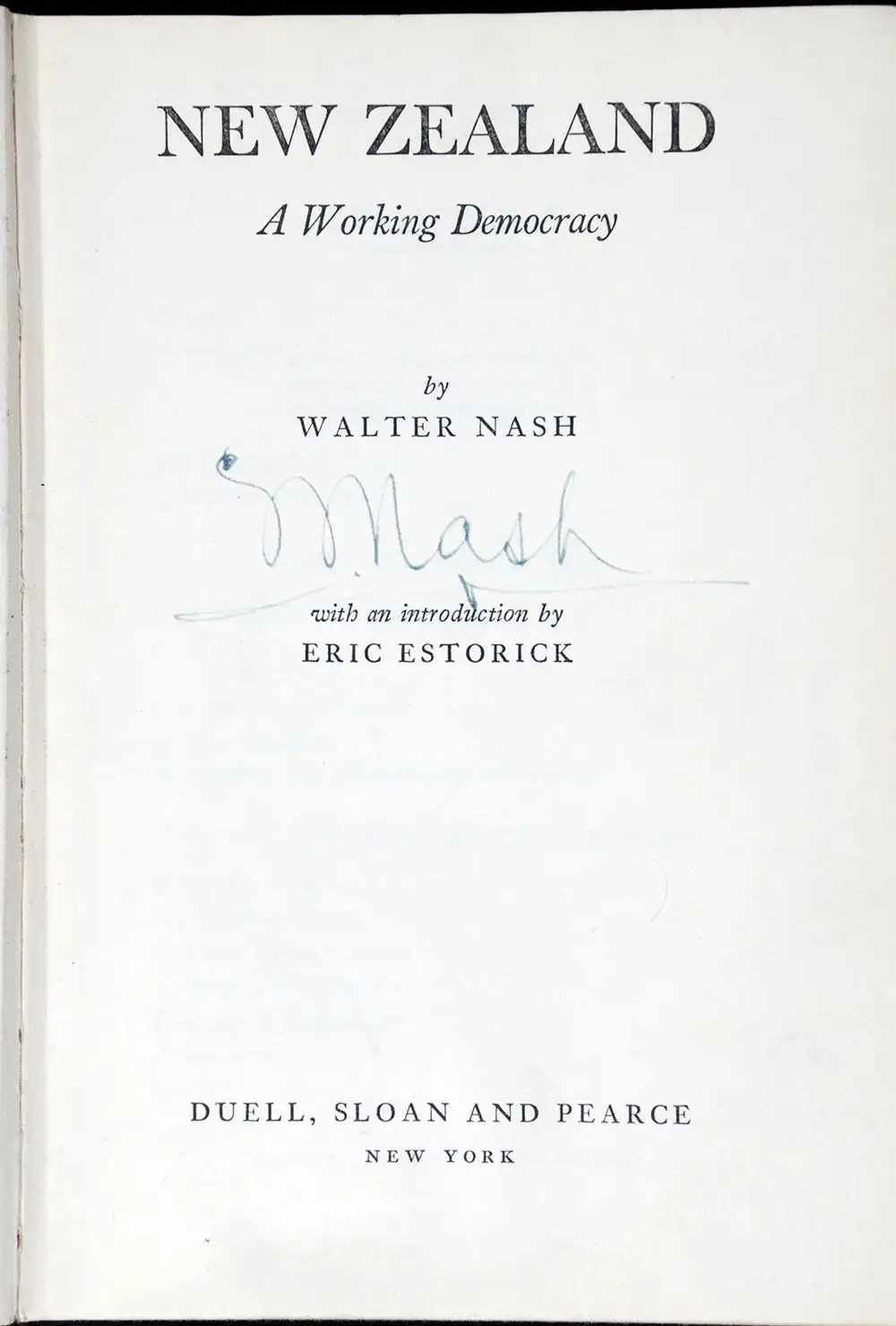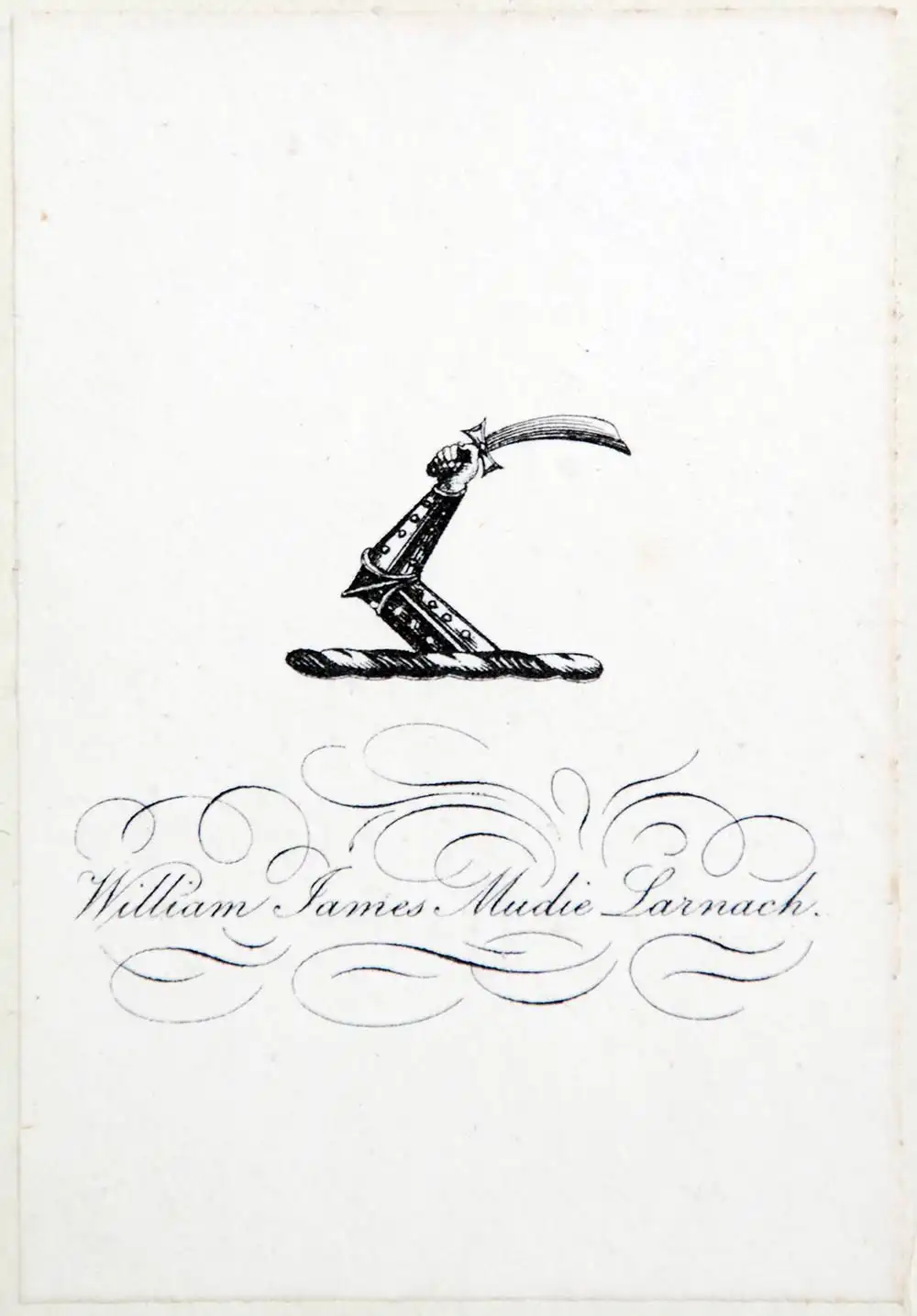Case 20
- Autographed Copies & Bookplates (N.Z.)

Edward Gibbon Wakefield. The British colonization of New Zealand: being an account of the principles, objects, and plans of the New Zealand Association: together with particulars concerning the position, extent, soil and climate, natural productions, and native inhabitants of New Zealand. London: John W. Parker, 1837.
A copy
of Edward Gibbon Wakefield’s British
colonization of New Zealand contains the autograph of his son E.J.
Wakefield, dated 1862, the year of his mercurial father’s death.
E.G.
Wakefield (1796-1862) was a theorist on colonisation and a principal figure in
the British settlement of New Zealand. His only son, Edward Jerningham
Wakefield (1820-1879) was likewise closely associated with his father’s
interest in colonisation. A restless traveller and explorer, he is best
remembered for his 1845 book Adventure in
New Zealand, a lively narrative of English settlement which doubled as
propaganda for the New Zealand Company.
The copy
is also marked by the distinctive hand of A.H. Reed, who records his purchase
of the book for one guinea in 1958.

Edward Gibbon Wakefield. The British colonization of New Zealand: being an account of the principles, objects, and plans of the New Zealand Association: together with particulars concerning the position, extent, soil and climate, natural productions, and native inhabitants of New Zealand. London: John W. Parker, 1837.
Open image in new window

Walter Nash. New Zealand: a working democracy. New York: Duell, Sloan and Pearce, 1943.
The
autograph of Walter Nash appears on the title page of this copy of his book New Zealand: a working democracy.
Sir
Walter Nash served as Prime Minister of New Zealand in the second Labour
government of 1957-1960. He was also an influential Minister of Finance in the
first Labour government.
During
his tenure as Minister to the United States, Nash wrote New Zealand: a working democracy, a discussion of New Zealand’s
economy, war effort and foreign relations, intended for the American market. As
a wartime leader, Nash reluctantly abandoned his earlier pacifism.

George A. Lawrence. Silverland. London: Chapman and Hall, 1873.
The Reed
Collections copy of George A. Lawrence’s Silverland,
(a little-known account of the novelist’s travels in America) contains the rare
bookplate of Dunedin businessman and politician William James Mudie Larnach
(1833-1898). Larnach is famed for his residence The Camp (popularly known as
Larnach’s Castle) and for his death by suicide at Parliament Buildings.
Larnach’s
library was sold by auction at Dunedin in April 1900. His very substantial
collection included rare and valuable books on the early history of Australia
and New Zealand, and attracted widespread interest from representatives from
both countries.


